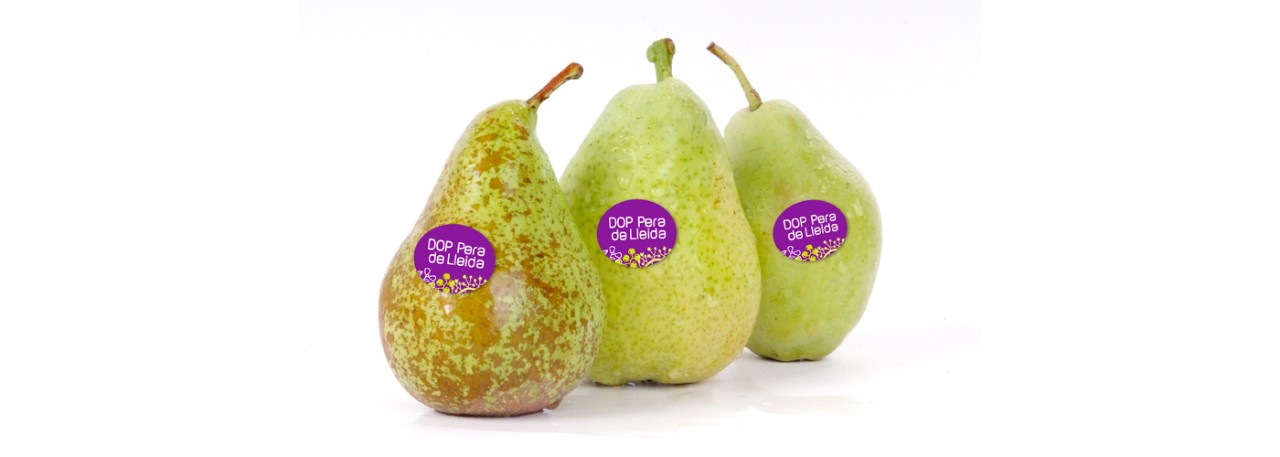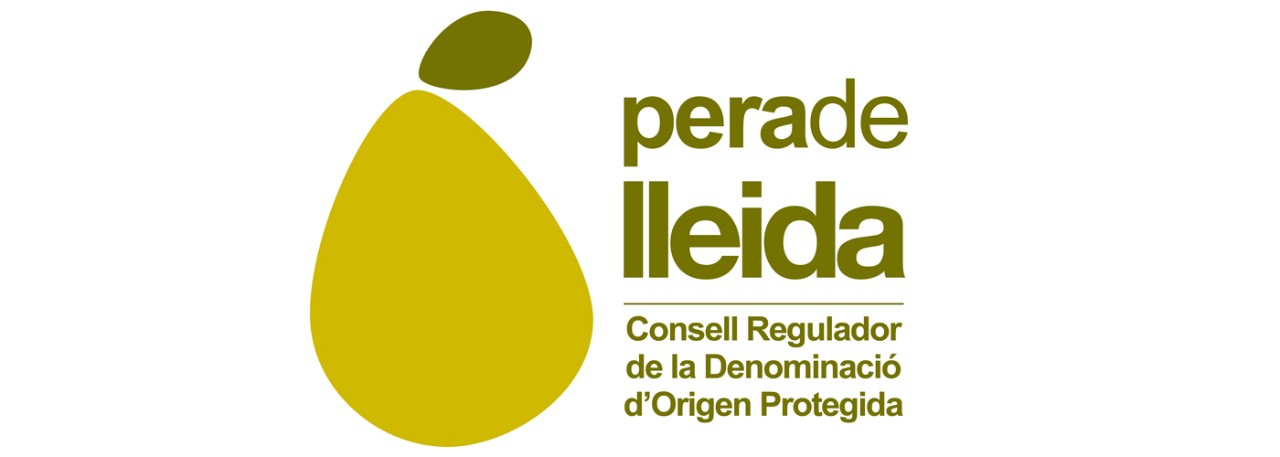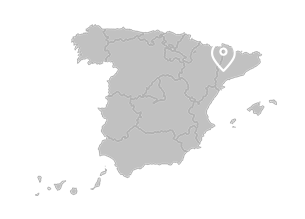.png.transform/rendition-xs/image_image%20(1).png)
Pera de Lleida PDO
The fruit (pear) protected by the Pera de Lleida designation belongs to the species Pyrus communis L. from the varieties Limonera, Blanquilla and Conference, quality classes Extra and Class I, and is for fresh consumption.
Tasting notes
The pears are typically very sweet, extremely juicy and aromatic. A distinctive feature of the Conference variety is its less regular and more rustic type of russeting, and its more rounded shape.
Other notes
Skin color: Limonera, green-yellow (when ripe); Blanquilla, green-green/grey (when ripe) and Conference green-green/yellowish (when ripe).
Color of flesh: Limonera, ivory; Blanquilla, white and Conference, white-yellowish.
Juiciness of flesh: Limonera, medium; Blanquilla, high and Conference, medium.
Minimum size (diameter): for both Extra and Class I, for the three varieties (Limonera, Blanquilla and Conference), 60 mm.
Hardness, firmness of flesh: Limonera 11 lb-14 lb (5.0 kg-6.4 kg); Blanquilla 9 lb-13 lb (4.1 kg-5.9 kg) and Conference 10 lb-13 lb (4.5 kg-5.9 kg).
Russeting: Limonera, none; Blanquilla, none; Conference, yes.
Sugars (degrees Brix): Limonera, 11.0 ; Blanquilla, 12.0 and Conference, 12.5.
Production / Processing method
The way orchards are planted out depends on tree shape and vigour. The distance between the trees ranges from 2.46 ft to 16.4 ft (0.75 to 5 m), and between rows of trees from 11.48 ft to 13.12 ft (3.5 to 4 m). Plantations have a density of between 500 and 3,900 trees per hectare. There is a wide range of densities because of the wide variety of pear growing systems. Some older Blanquilla pillar plantations may have 500 trees per hectare, whilst young Conference spindle bush plantations may have 3,900 trees per hectare. Plantations are usually on irrigable land, so once the trees are well established the soil is not worked.
Pruning and thinning: the shaping methods used are pillar, spindle bush and palmette. The shaping system is chosen according to tree shape and vigour, which also depends on the variety and trunk. Pruning is done to allow light and disease control products to reach all parts of the foliage. Once the fruit is formed, the trees are thinned to remove defective fruit and leave the correct load on the tree, which increases fruit quality.
Harvest: in early production areas, picking for Limonera pears begins around early July; Blanquilla pears are picked from the first week in August and Conference in mid-August.
Handling and packing: a first check is made on the state of the product on arrival at the central warehouse and depending on the outcome, the destination of the batch is decided, either for immediate sale or for storage in normal cold rooms in a controlled atmosphere or in ultra low oxygen (ULO) rooms.
The pears are classed and packed depending on their variety. Blanquilla pears are handled and packed by hand, as it has a very sensitive skin that bruises easily. Limonera pears and Conference pears especially, are more resistant and can be handled and packed by machine.
If the fruit is destined for market sale, the first process is cleaning. The pears are then sorted and classified to obtain uniform batches before being packed.
If the batches are being sent for long-term cold storage, they are taken there directly after having undergone post-harvesting treatment, if necessary. When the pears are removed from cold storage, the same operations are carried out as when they are sent for fresh consumption.
In all cases the pears can be kept in a pre-transportation room at the appropriate temperature and relative humidity while they await loading onto the refrigerated truck that will take them to their destination.
The contents of each pack must be uniform, including only pears form the same origin, variety, quality, ripeness, coloring and size. The visible part of the pack contents must be representative of what is inside.
Geography / Relief and climate
The protected area comprises two distinct landscape types: the northern area, which is mountainous (Catalan Pyrenees) and the Ponent area, where most of the fruit is grown.
Soils are from the Quaternary, Neogene and Paleogene periods. The fruit-producing districts are in the middle of the Catalan central basin, formed by a series of plains and low-lying coastal areas, usually less than 984.2-1312.3 ft (300-400 m) above sea level. This is an irrigable area with a shallow soil layer over carbonate materials that lend it distinctive properties such as low pH values, moderate levels of organic material, a medium to fairly fine texture, generally with good drainage and no salinity.
The climate is continental, temperate, with a Mediterranean influence and much lower rainfall than in the rest of Catalonia. The climate is characterized by its strong contrasts, with significant changes in temperature (cold winters and hot summers). The typical winter fog starts in mid-November and persists until the end of January, with about 51-52 days of fog per year. Total rainfall is 300-375 mm per year.
The annual average temperature is around 13-16º C / 55.4-60.8ºF. Average maximum temperatures in the hottest month are 27-32º C / 80.6-89.6º, and average minimum readings for the coldest month are around 2-6º C / 35.6-42.8ºF.
Regulatory Council
Consejo Regulador de la DOP Pera de Lleida
Av. Tortosa, 2 - Edificio Mercolleida
25005 Lleida
Cataluña
Tel: (+34) 973 220 149
peradelleida@peradelleida.es
www.peradelleida.es
Sources:
Blanquilla pears are handled and packed by hand. Limonera pears and Conference pears can be handled and packed by machine.


- /content/dam/en/icex-foodswines/images/products/fruits---vegetables/pera-de-lleida-pdo/Pera%20de%20Lleida%20PDO%20carr1.jpg
- /content/dam/en/icex-foodswines/images/products/fruits---vegetables/pera-de-lleida-pdo/Pera%20de%20Lleida%20PDO%20carr2.jpg

Lleida (Catalonia)
